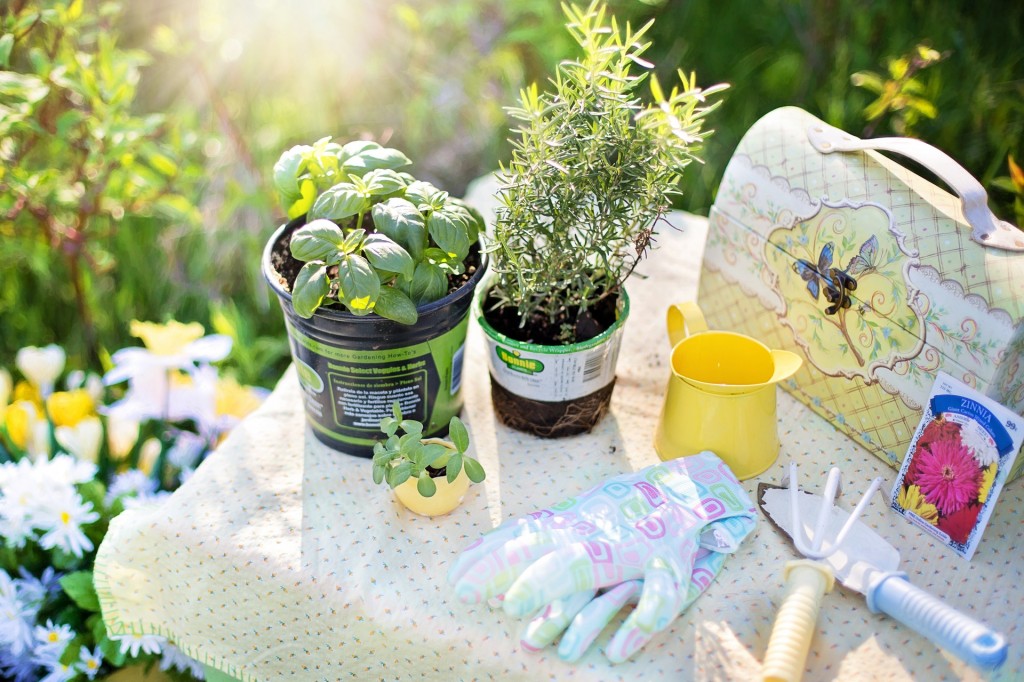Being in a wheelchair shouldn’t stop you from getting outdoors in your garden, enjoying the fresh air and doing something you love. Gardening offers satisfaction and achievement; you have the chance to create your own nature haven, giving you a place to relax and unwind. A little goes a long way in a garden, and the efforts you put in will reward you for months to come. However, being in a wheelchair or having mobility issues can limit what you do in your garden, so we have put together some tips on how you can adapt.
Pathways
Widening the pathways in your garden, ensuring they are evenly surfaced and offer good grip is one of the first steps to take to improve your garden for easy access. Textured concrete or paving slabs are good options, and you can put the slabs into an eye-catching pattern to add more aesthetic appeal.
You also need to ensure the pathways in your garden are all connected, either in a circular pattern in the garden or there is enough space to turn a wheelchair around. A circular or figure-of-eight path allows visitors and yourself easy access to the majority of the garden, and also allows you to view and admire the space from different places.
Level
For wheelchair users, it is a good idea to have as level a garden as you can manage. This means removing steps and have low gradient slopes or ramps, so there is access to the garden in all weathers and wheelchair users can get around the garden without obstacles.
Grass
Removing or reducing the lawn area makes your garden easier to manage as there will be no need for mowing or trimming the grass which is low to the ground. Covering it with landscaping cloth and covering that with bark or gravel prevents the grass from growing back or weeds appearing.
Garden Beds
Raised garden beds make the perfect alternative to planting straight into the ground. You can choose to have these as a permanent structure in your garden, built out of wood or concrete, or you may select the free-standing option, allowing you to move the planter around the garden to the best position for the plants.
Planters that are higher and off the floor are much easier for wheelchair users to work with, as it removes the need to bend down or reach up. The width of your beds should be considered when you choose them; a planter that is too deep you will find it difficult to reach to the back. Having a narrow planter gives you access to the whole area while you are still seated.
When choosing what plants to put into the flower beds, think about how high they can grow. For example, if you are planning on growing beans, it may be tricky to pick the beans when they have reached full height. Low growing or crawling plants may be more suitable.
Reach
Though using an all-terrain mobility scooter means you can move around the garden better, the controls in front limit your reach. Getting chairs with open sides or adjustable seats are great options. You can also rely on reaching to the side, meaning you won’t have to lean as far and can swap sides to reduce the strain on your back due to twisting in your seat.
Tools
For the tools you are using in the garden, try opting for lighter ones. The lighter they are, the more comfortable to use. You might also want to look at tools with ergonomic handles which provide better comfort and handles that can extend for the distance you need. Though lightweight tools are beneficial, you should make sure the material they are made from is durable so will last. When it comes to storing your tools, keep them in an accessible place, such as hanging on the wall or placed in a low cupboard.
Gardening gives a purpose to your day, and spending time outdoors in your own space can be beneficial to your health and mental wellbeing. Are you starting to plan what needs to be done in your garden when the weather warms up?







